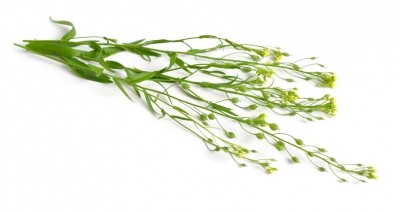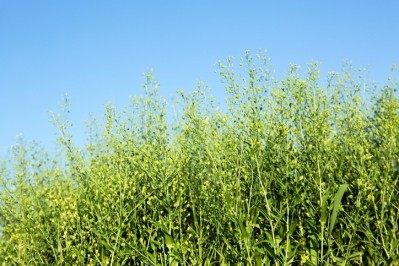Carinata feed, fuel research gets US funding

The Southeast Partnership for Advanced Renewables from Carinata (SPARC) research team was awarded $7.03m for the first year of its multi-year project through a National Institute of Food and Agriculture (NIFA) grant.
The oilseed project includes work looking at the role carinata meal could play in animal feed for cows and poultry.
The grant was part of a series that awarded $21.1m to address questions facing the US bio-economy, said the USDA.
The project developed out of an initial interest to find a secondary cropping plant that could be grown in the southeastern US as a winter crop, said David Wright, corresponding researcher and professor in the agronomy department at the University of Florida. That interest developed into evaluation of camelina and then carinata.
“We got a couple of varieties and grew it alongside the camelina and you could see the potential differences were tremendous, and the yield was two to three times higher than camelina,” he told FeedNavigator.
The researchers also started working with interested industry members, including Agrisoma, he added.
“The next step is expanding the plantings and looking at the elite germplasms and we have faculty looking at the meal and by-products,” he said. Currently there are growers working with test production in 14 areas including Florida, Georgia, Alabama, North Carolina, South Carolina, Tennessee and Mississippi, he added.
“We wanted some early season variety that could be planted in early November and harvested in late April or May and still get the summer crop without reducing their yields,” he said.
Feed use
Initial trials with the meal produced have focused on feeding cattle, said Wright. However, the current NIFA grant is allowing the group to expand its work and look at the use in poultry feed.
“High protein meal is needed with everything,” he said. “We [also] have a dairy faculty who is interested in looking at this – so it’s pretty much across the board, even though the initial interest was in beef.”
As production of the oilseed increases it could be used in a manner similar to soybean meal or cottonseed meal, he said. The group also has spoken with oilseed processing facilities regarding crush.
“The crush facilities that are food grade oil, they said the if acreage gets there, ‘We’ll crush this – it’s worth our time,’” he said. “There are certain levels that people are looking before they commit – we think we have a good chance to get it into commercial use.”
The seed can be processed in most oilseed facilities, said Wright. “The main thing on the meal is – a cold crush does not get all the oil out, but most facilities have the hexane process that reduces the oil in the meal to about 2%,” he added.
“It will be 40-45% oil out of the field, and if you do the cold crush it leaves about 12% [of the oil] and that’s a high oil content to store it,” he said. “The hexane process takes it down to about 2% and you can store it much longer.”
Partnership emphasis
In addition to the work on the crop’s yield and use of the by-products, the research group has been working to establish additional relationships with industry, growers and other educational institutions, said Wright.
“Essentially what we’ve tried to do with the grant is add additional partners in every phase from production through utilization,” he said. “We have universities all over the southeast.”
The group includes multiple researchers, industry members and several grain handling companies like Cargill, he said. Group members also been working with producer organizations like the Florida Cattlemen’s Association regarding use of the carinata meal.
“We’ve reached out to the entire supply chain,” he said.
“Our goal is not only to increase production, but we have to make every aspect, everyone who is part of this supply chain to have a profitable business, that’s one of our goals,” said Wright. “If the farming community isn’t make making money this won’t happen – every aspect of the supply chain is being looked at.”
Grant details
The grant was awarded through NIFA’s Agriculture and Food Research Initiative, the USDA said.
The program is considered the flagship competitive grant program that addresses “foundational and translational research, education and extension projects in the food and agricultural sciences,” said the department.
“Our nation has made great strides in promoting the bio-economy,” said Sonny Ramaswamy, NIFA director, about the grants. “Today’s investments will help speed the development of regional systems for sustainable bioenergy, bioproducts, and biomaterials production, and create a strong workforce needed to support the bio-economy.”
The initial grant award from NIFA is part of a $15m, five-year grant to commercialize the feed and fuel generating oilseed, said Wright.
When the project started, the goal was to be able to produce about 3,500lbs of seed per acre, which would generate about a ton of carinata meal and 200 gallons of oil, he said.
Some strains of the plant have been able to produce that amount, but the average yield is around 2,000lbs per acre, he said. “With newer varieties we have higher yield capabilities – as growers get used to it and harvesting it,” he added.
“We have had plots higher than 5,000lb per acre of seed on research plots,” he said. “We know the yield potential is out there.”












